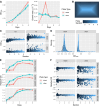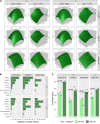An automated high-throughput lighting system for screening photosynthetic microorganisms in plate-based formats
- PMID: 40087381
- PMCID: PMC11909208
- DOI: 10.1038/s42003-025-07853-y
An automated high-throughput lighting system for screening photosynthetic microorganisms in plate-based formats
Abstract
The capacity of photosynthetic microorganisms to fix carbon dioxide into biomass positions them as promising cell factories for sustainable biomanufacturing. However, limitations in screening throughput hinder the identification of enzymes, strains, and growth conditions needed to realize this potential. Here we present a microplate-based high-throughput cultivation system that can be integrated into existing automation infrastructure and supports growth of both prokaryotic and eukaryotic photosynthetic microorganisms. We validate this system by optimizing BG-11 medium compositions for Synechococcus elongatus UTEX 2973, Chlamydomonas reinhardtii UTEX 90 and Nostoc hatei CUBC1040, resulting in growth rates increases of 38.4% to 61.6%. We also identify small molecules that influence growth rates in Synechococcus elongatus UTEX 2973, including candidate compounds for growth rate increase and dozens that prevent growth. The sensitivity, throughput, and extensibility of this system support screening, strain isolation, and growth optimization needed for the development of photosynthetic microbial cell factories.
© 2025. The Author(s).
Conflict of interest statement
Competing interests: S.J.H. is a co-founder of Koonkie Inc., a bioinformatics consulting company that designs and provides scalable algorithmic and data analytics solutions in the cloud. All other authors declare no competing interests.
Figures





References
MeSH terms
Supplementary concepts
LinkOut - more resources
Full Text Sources

